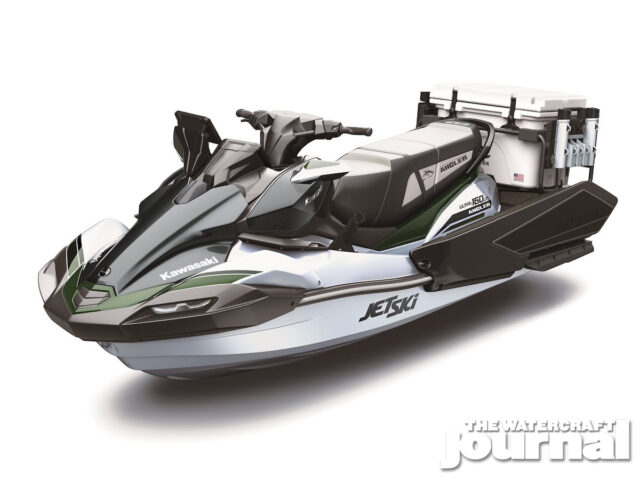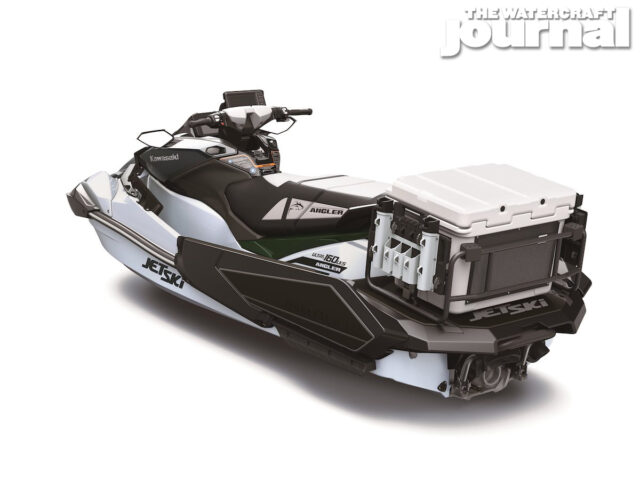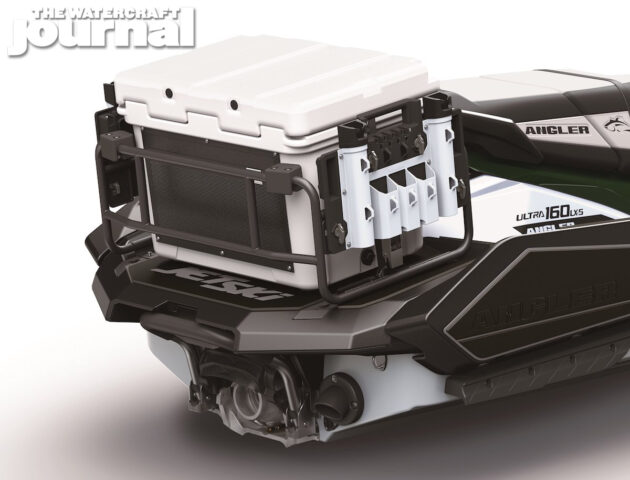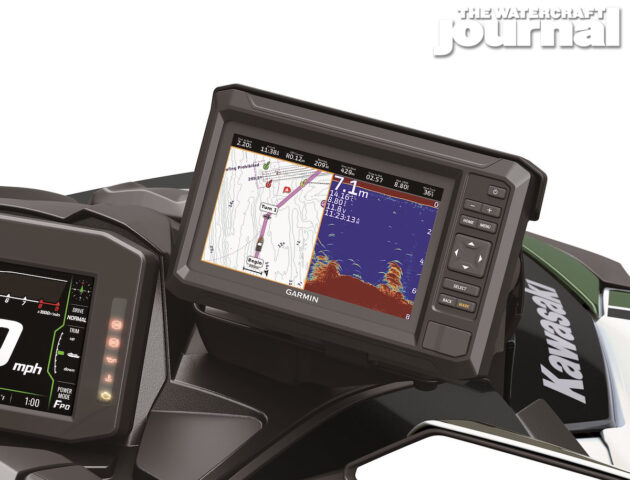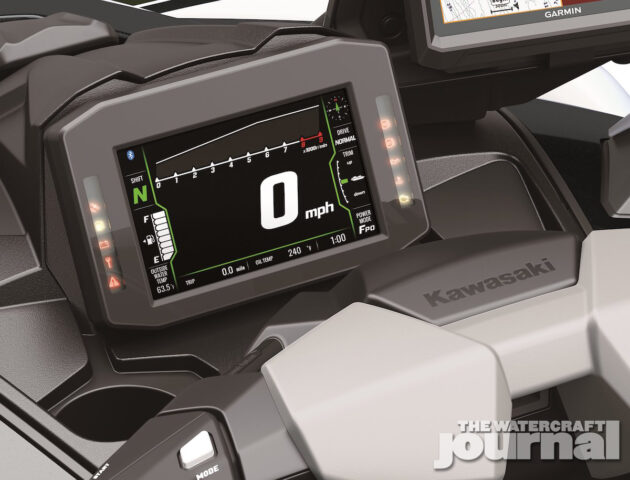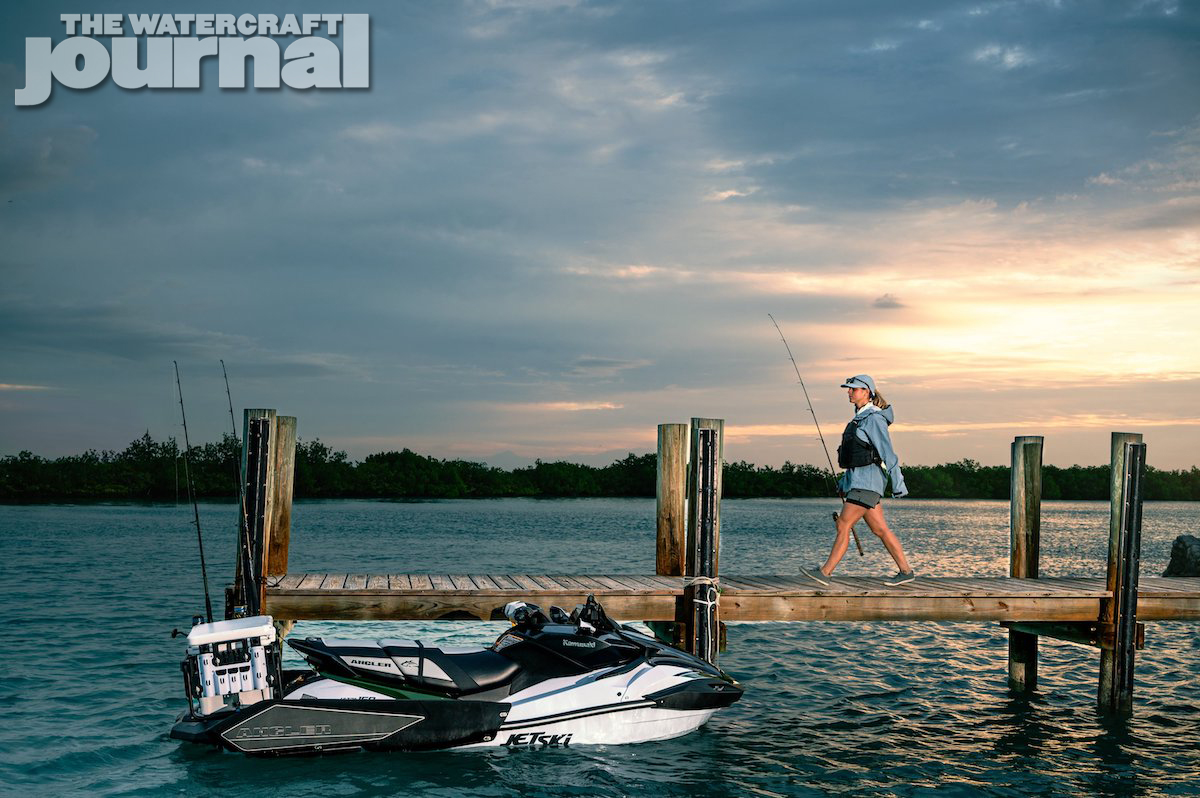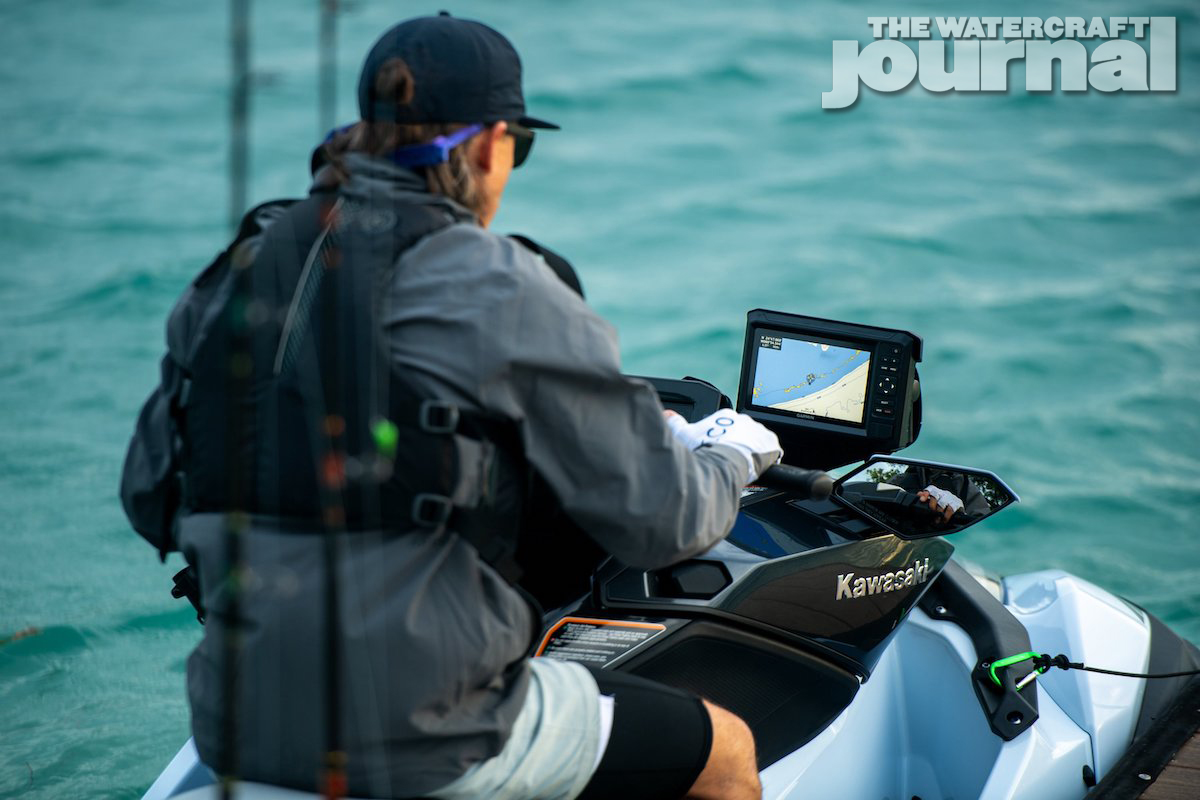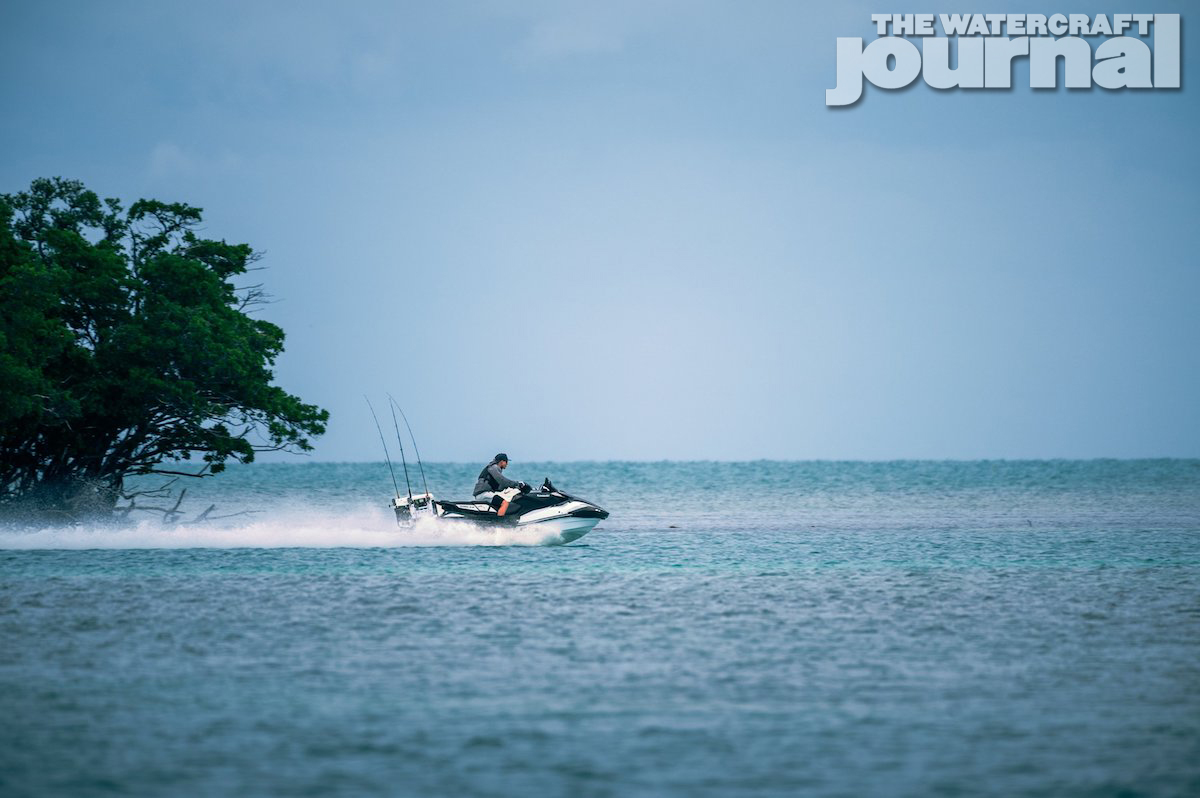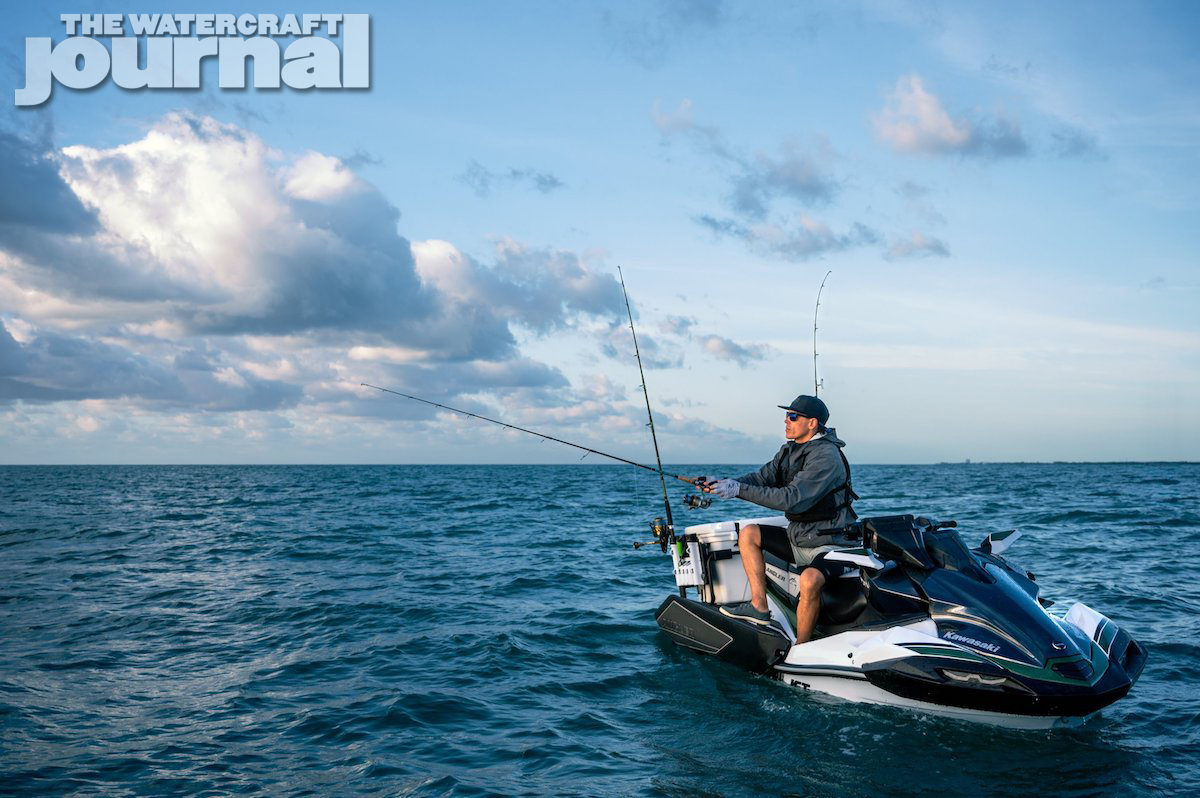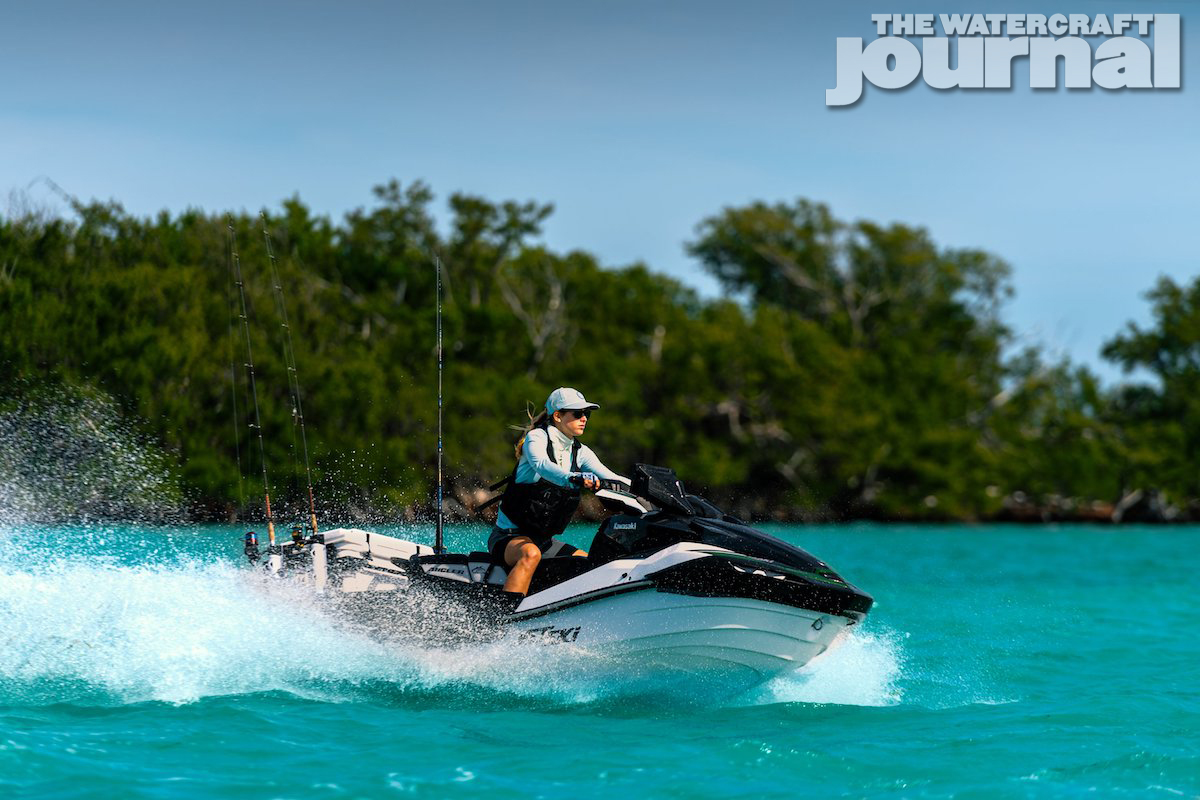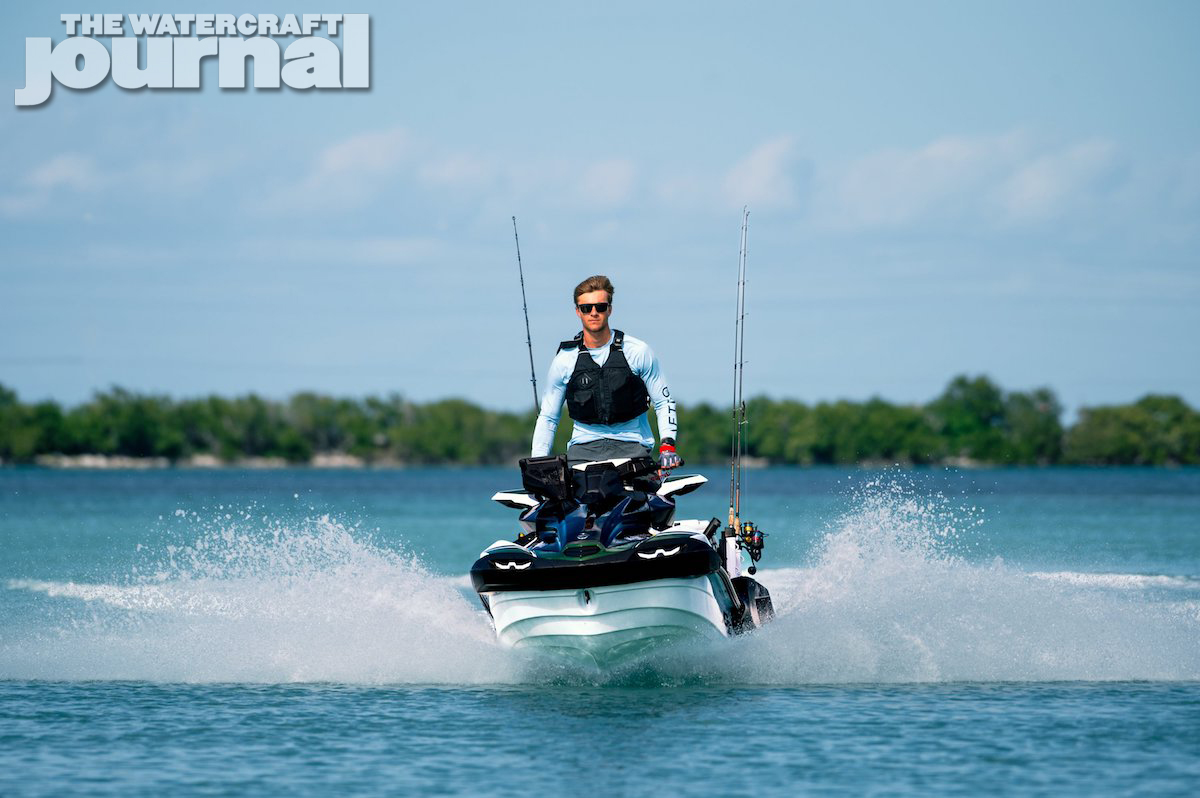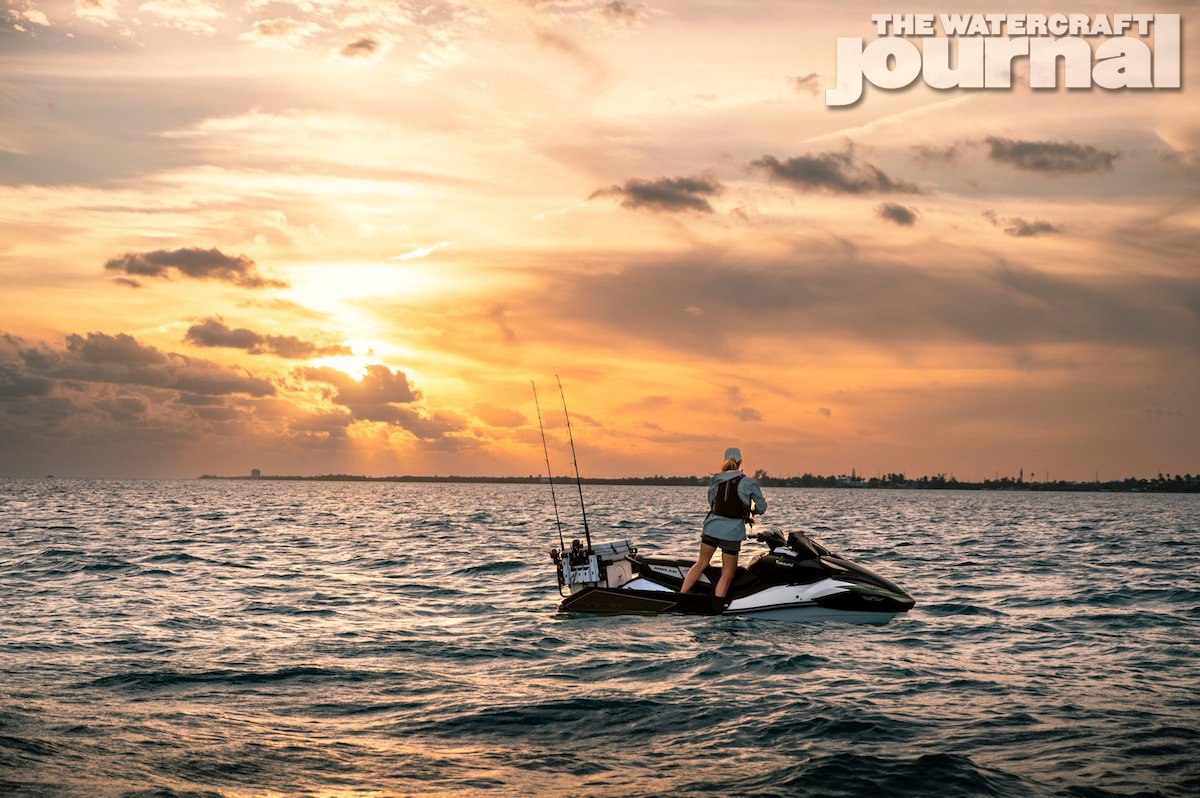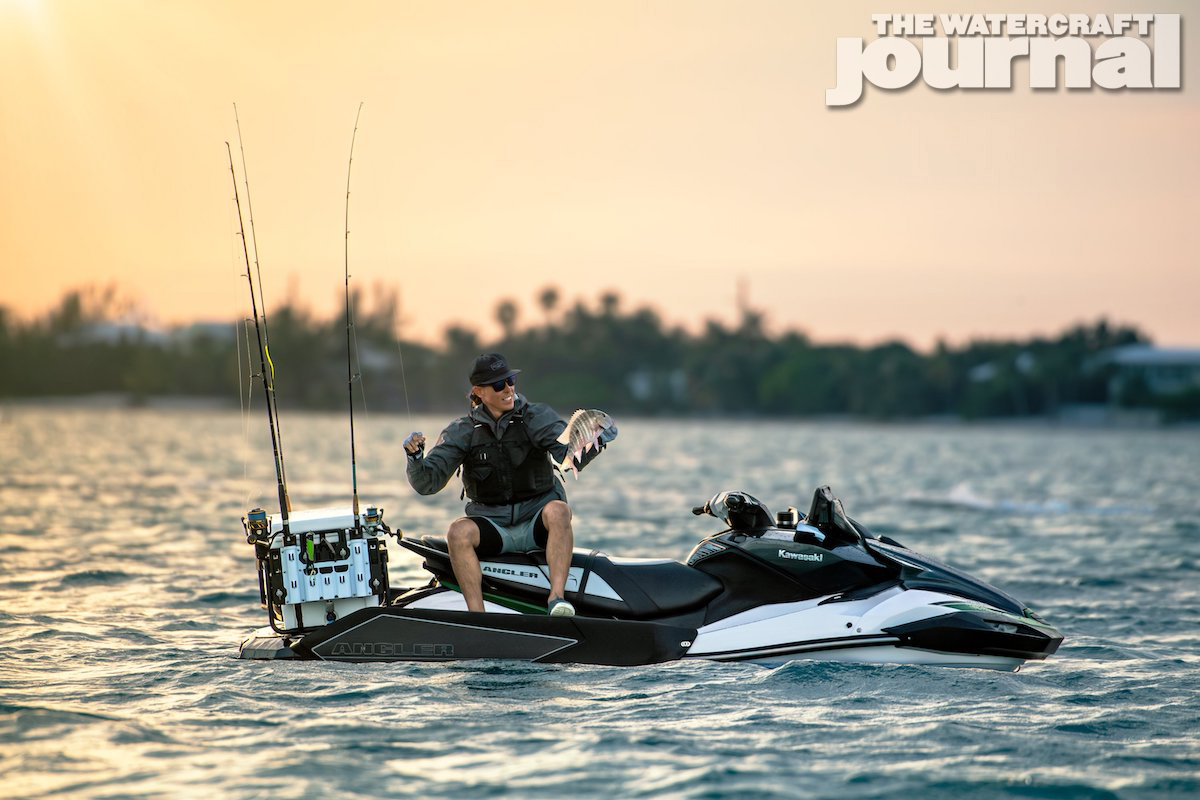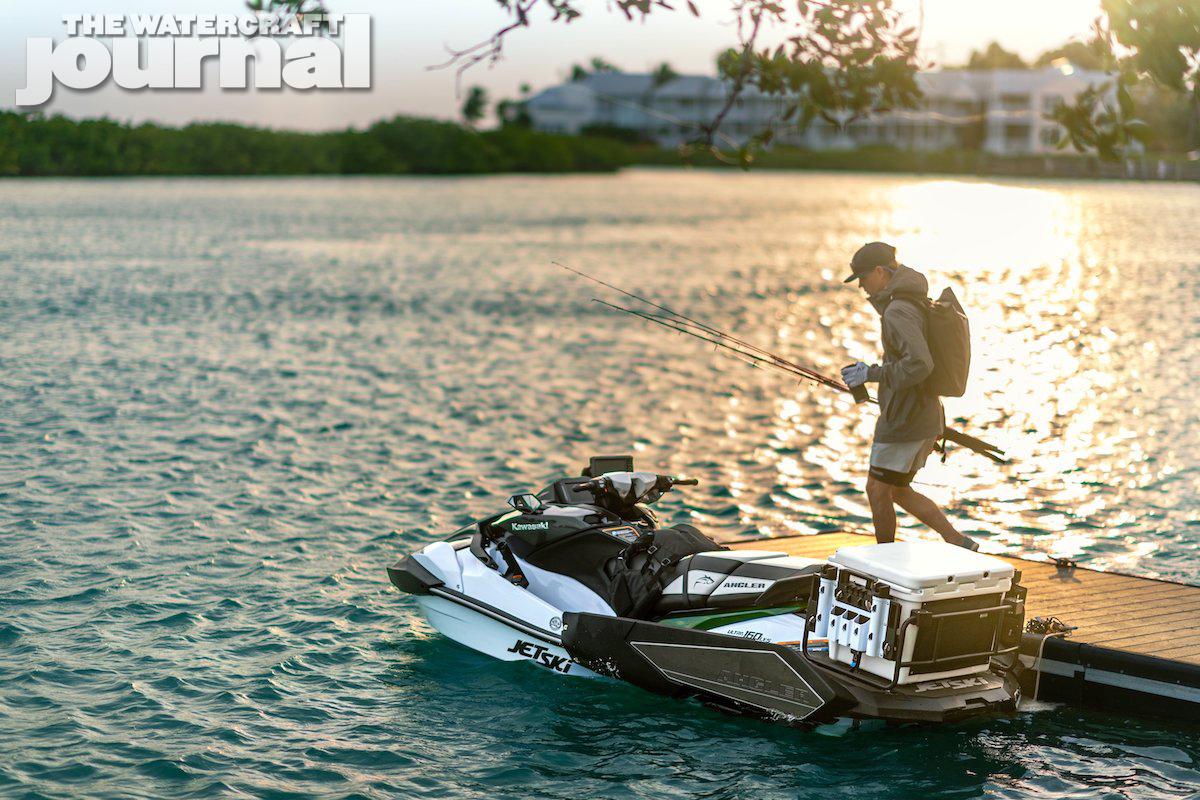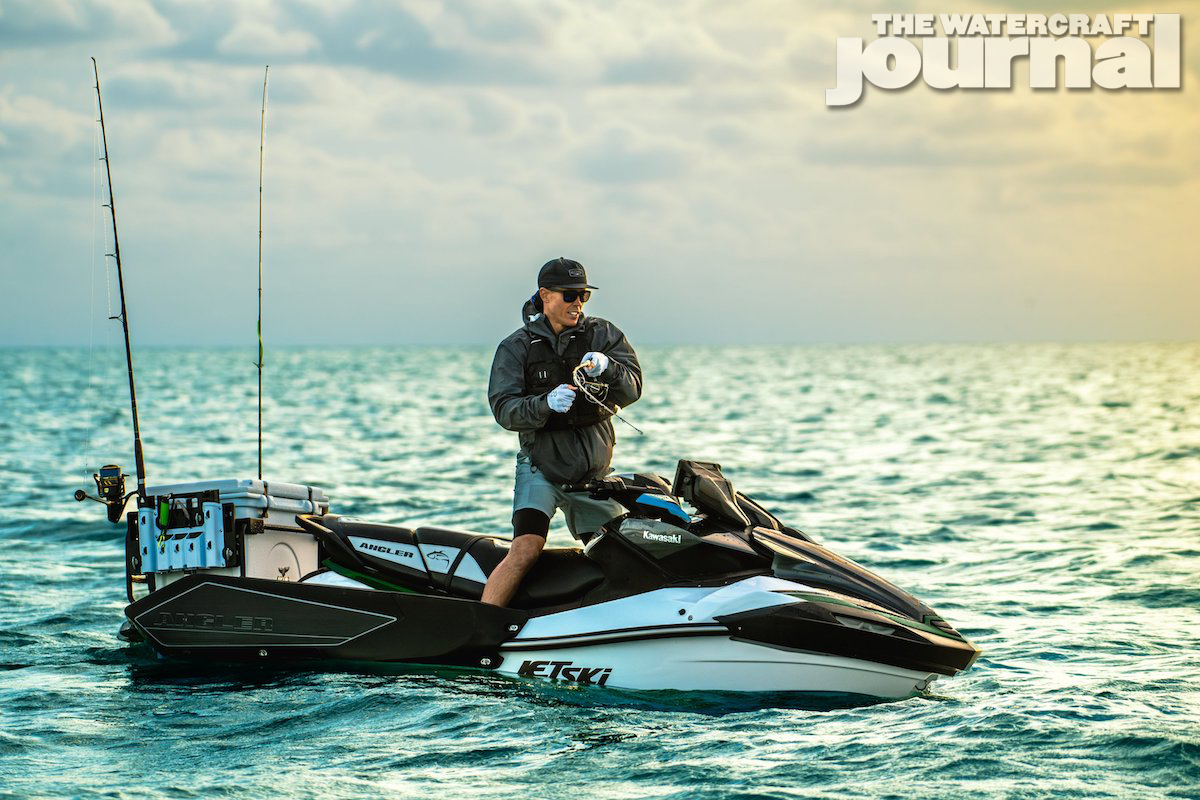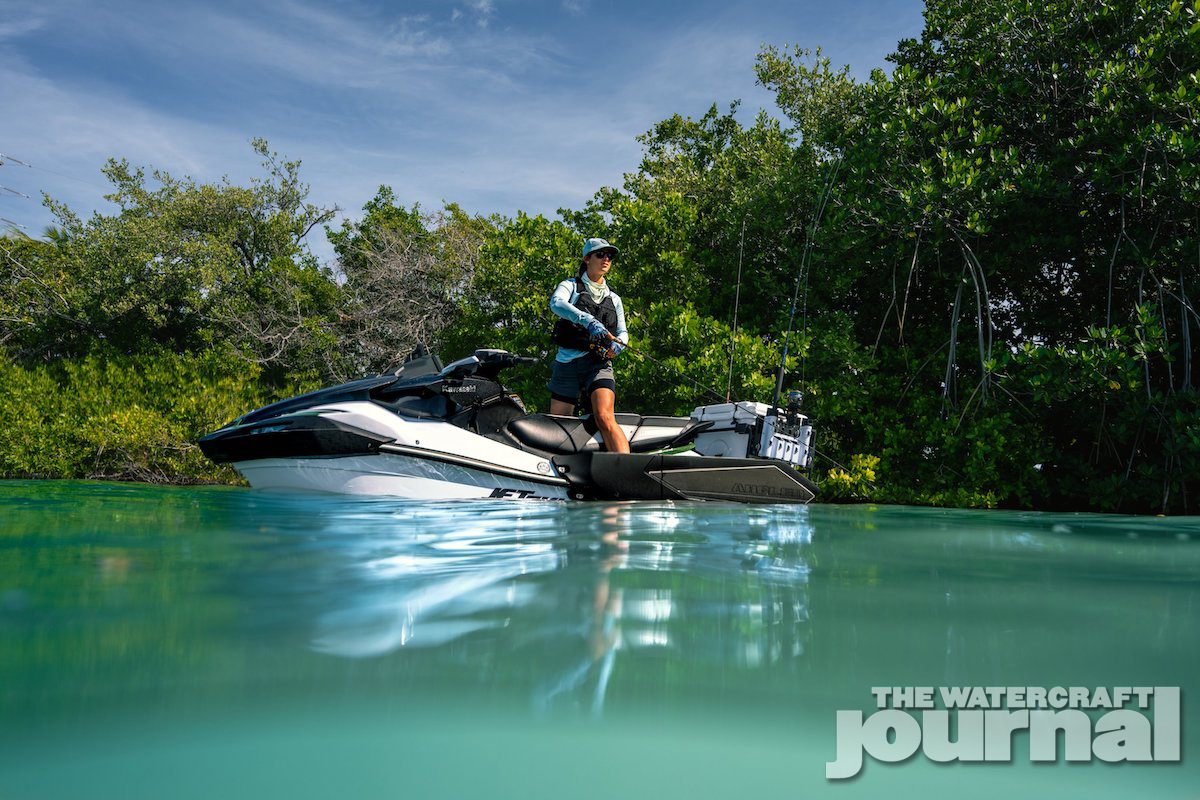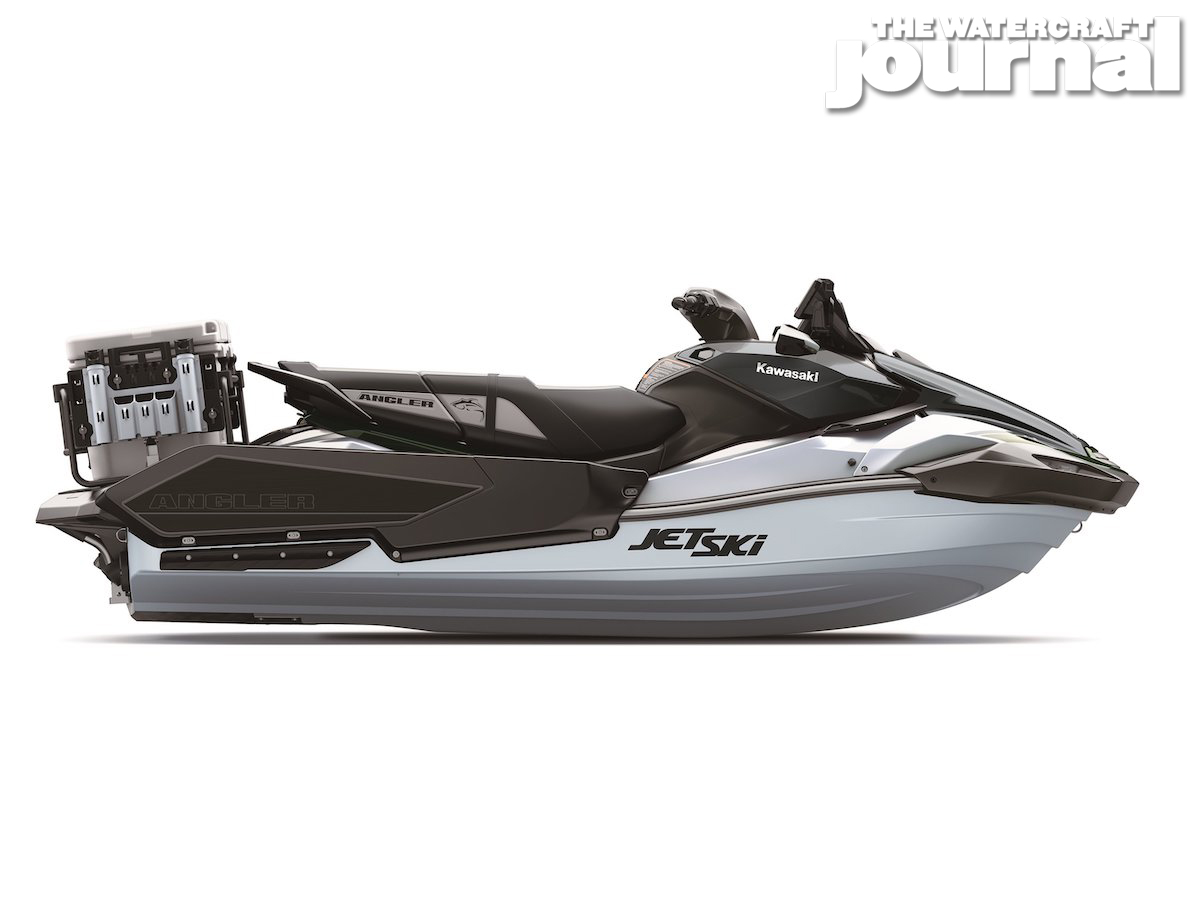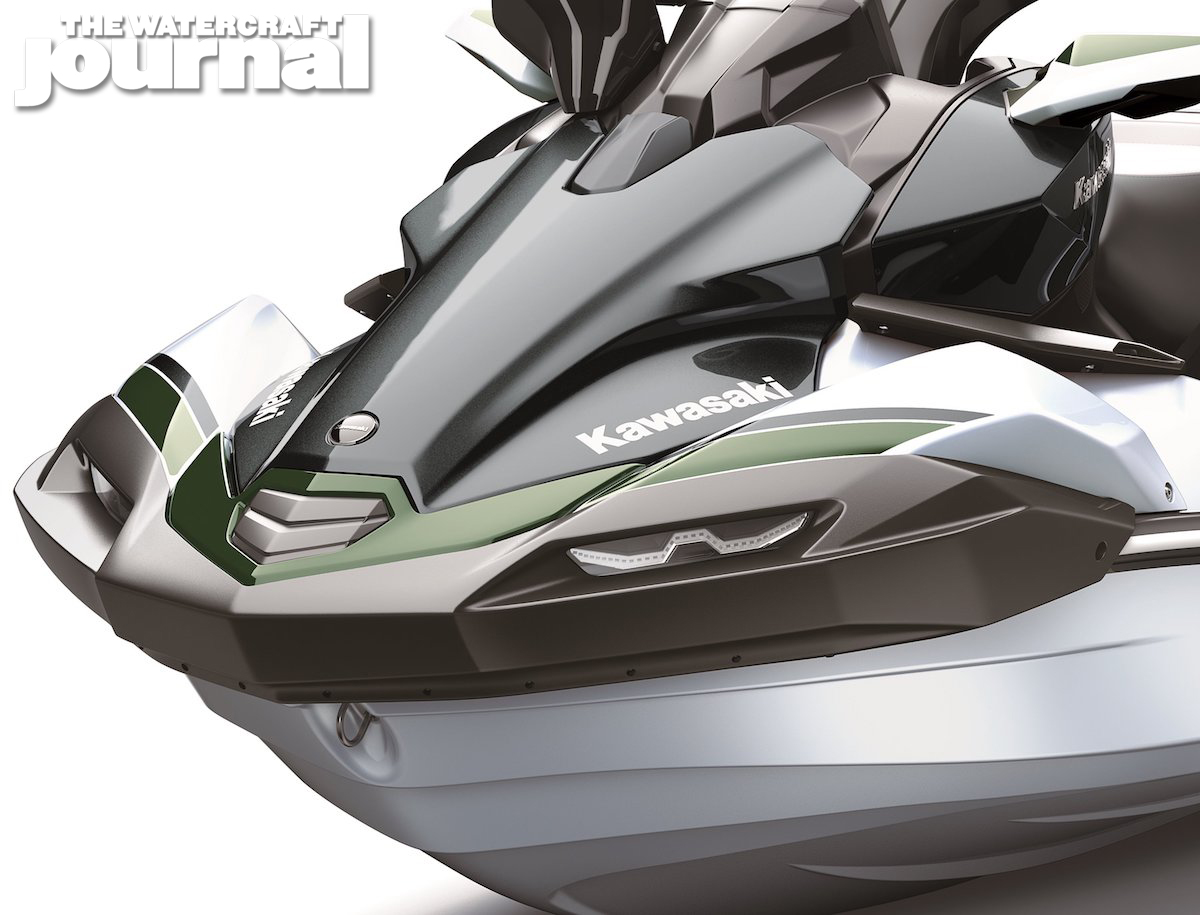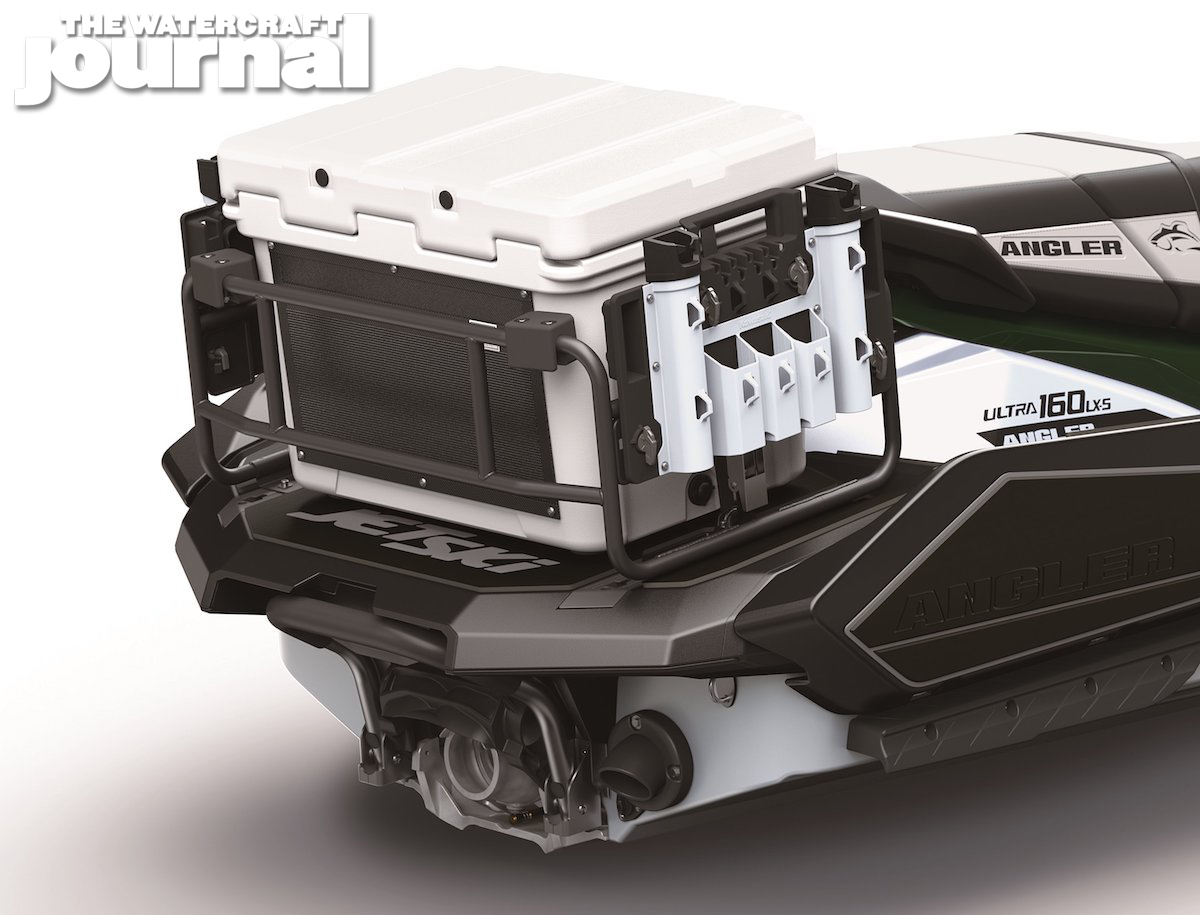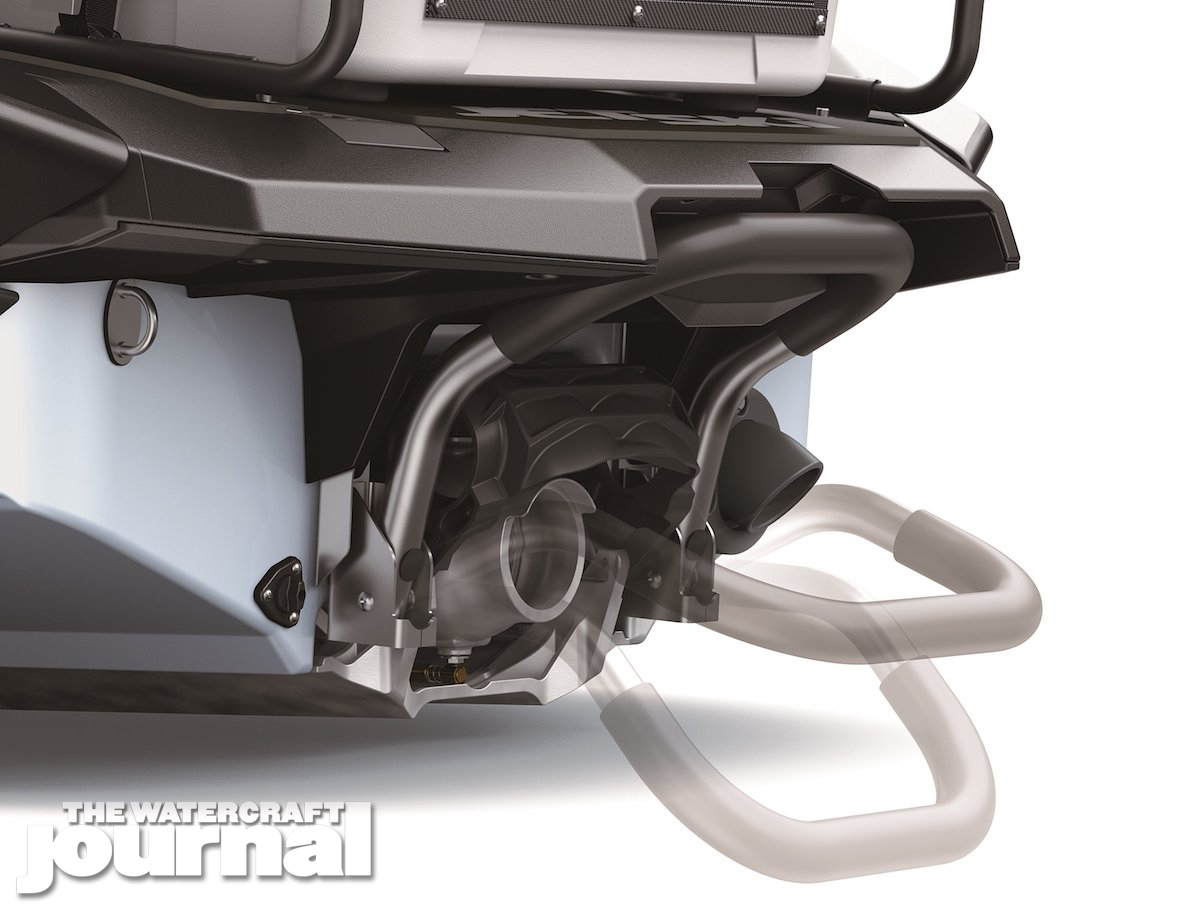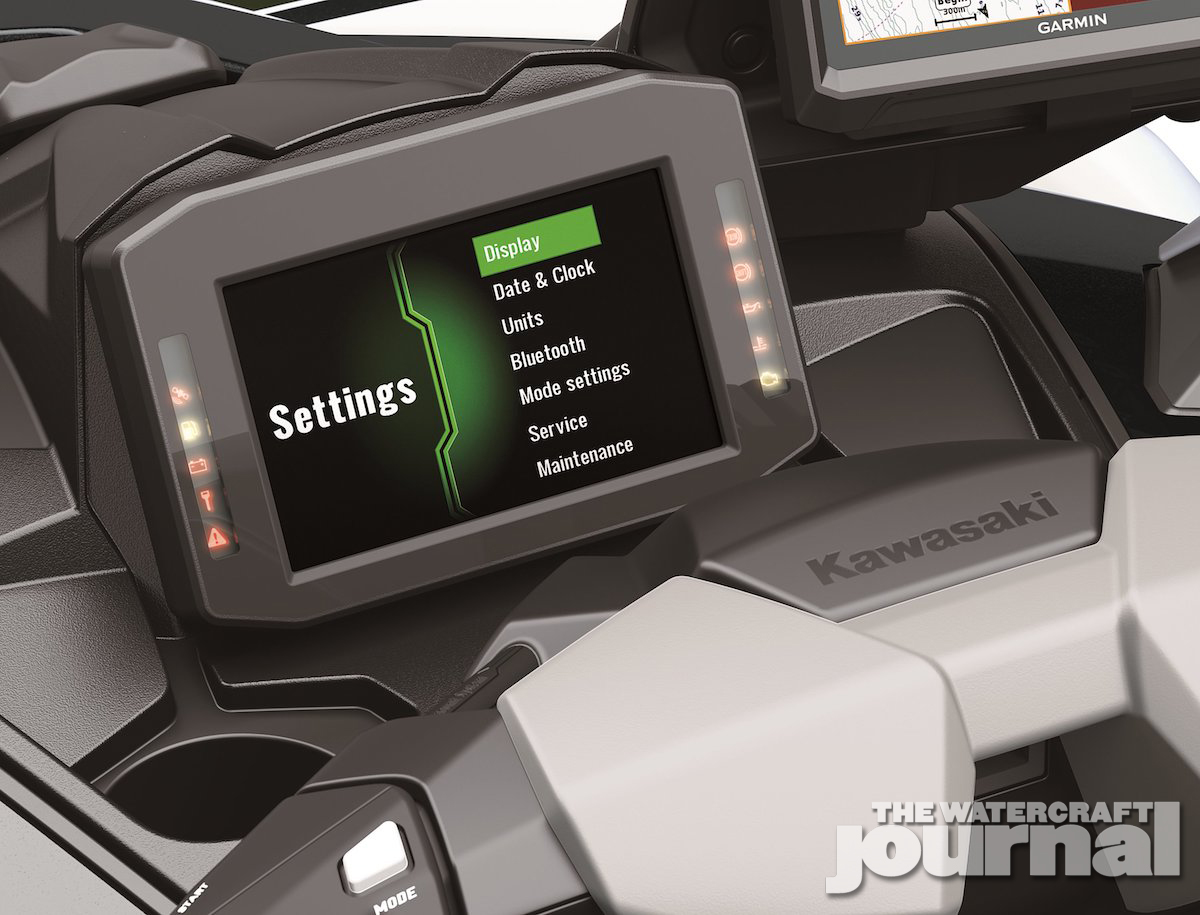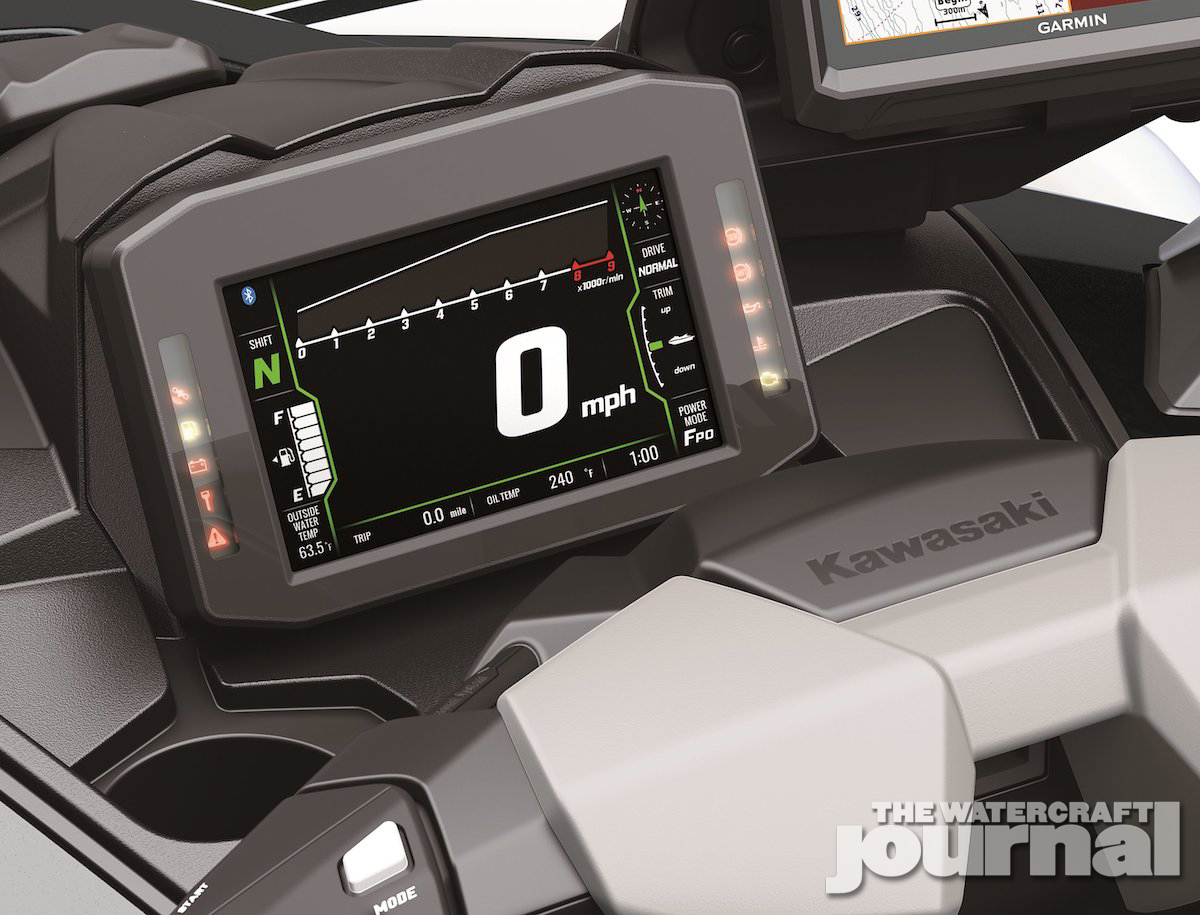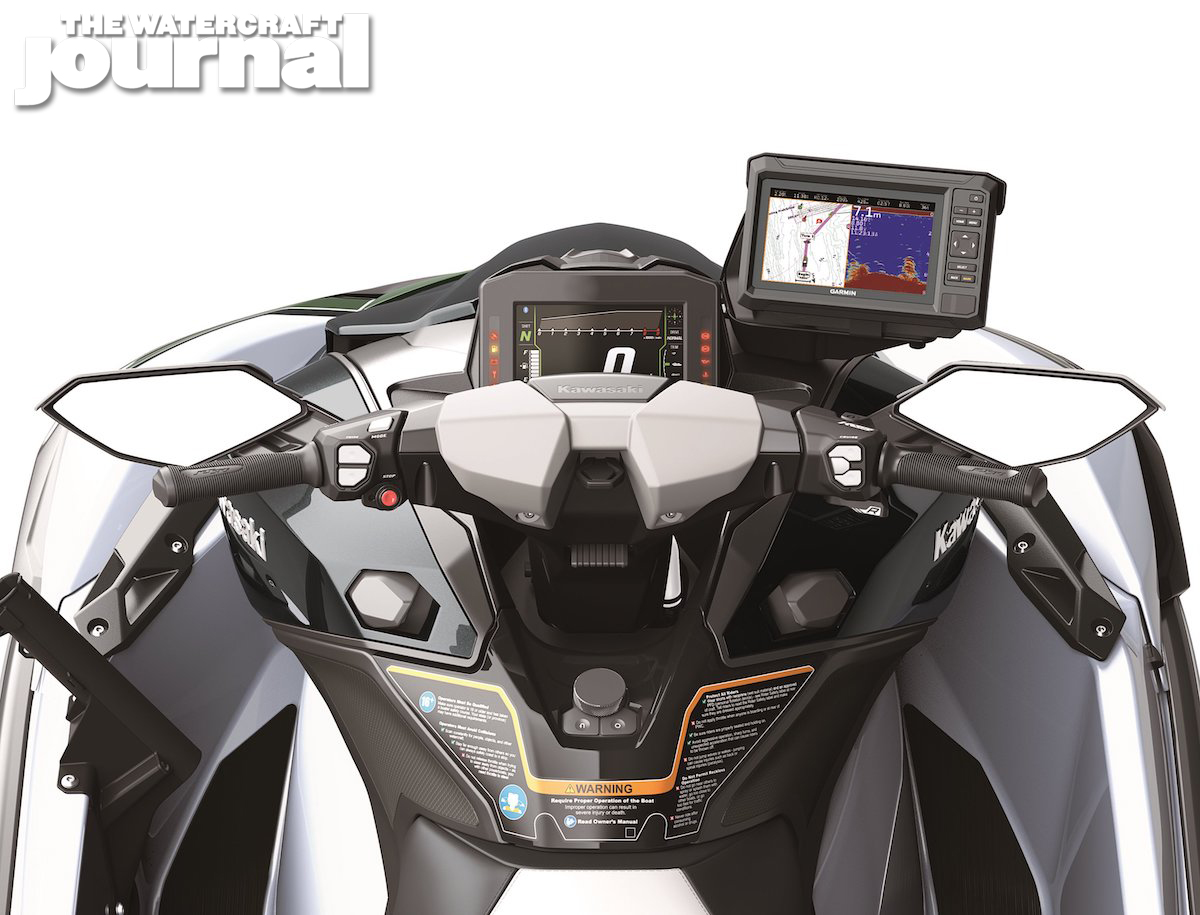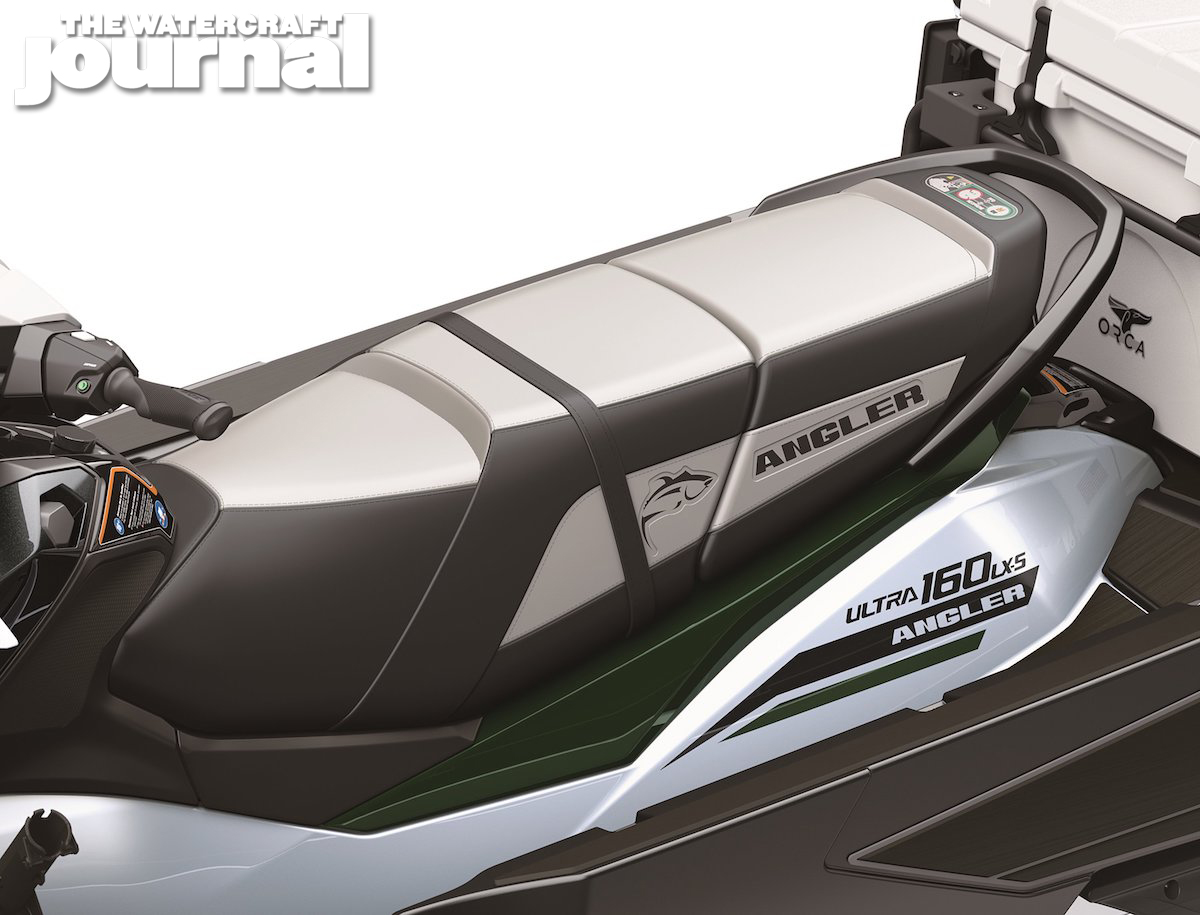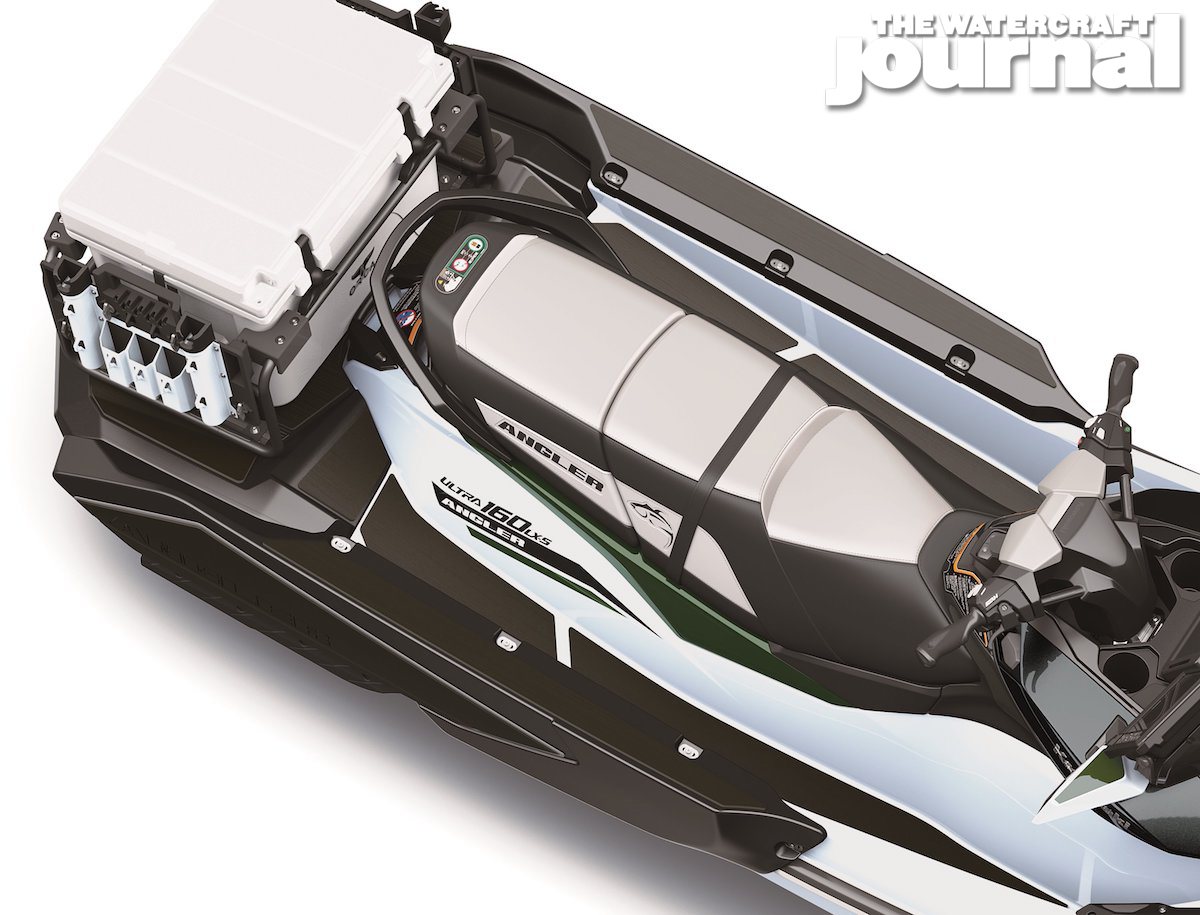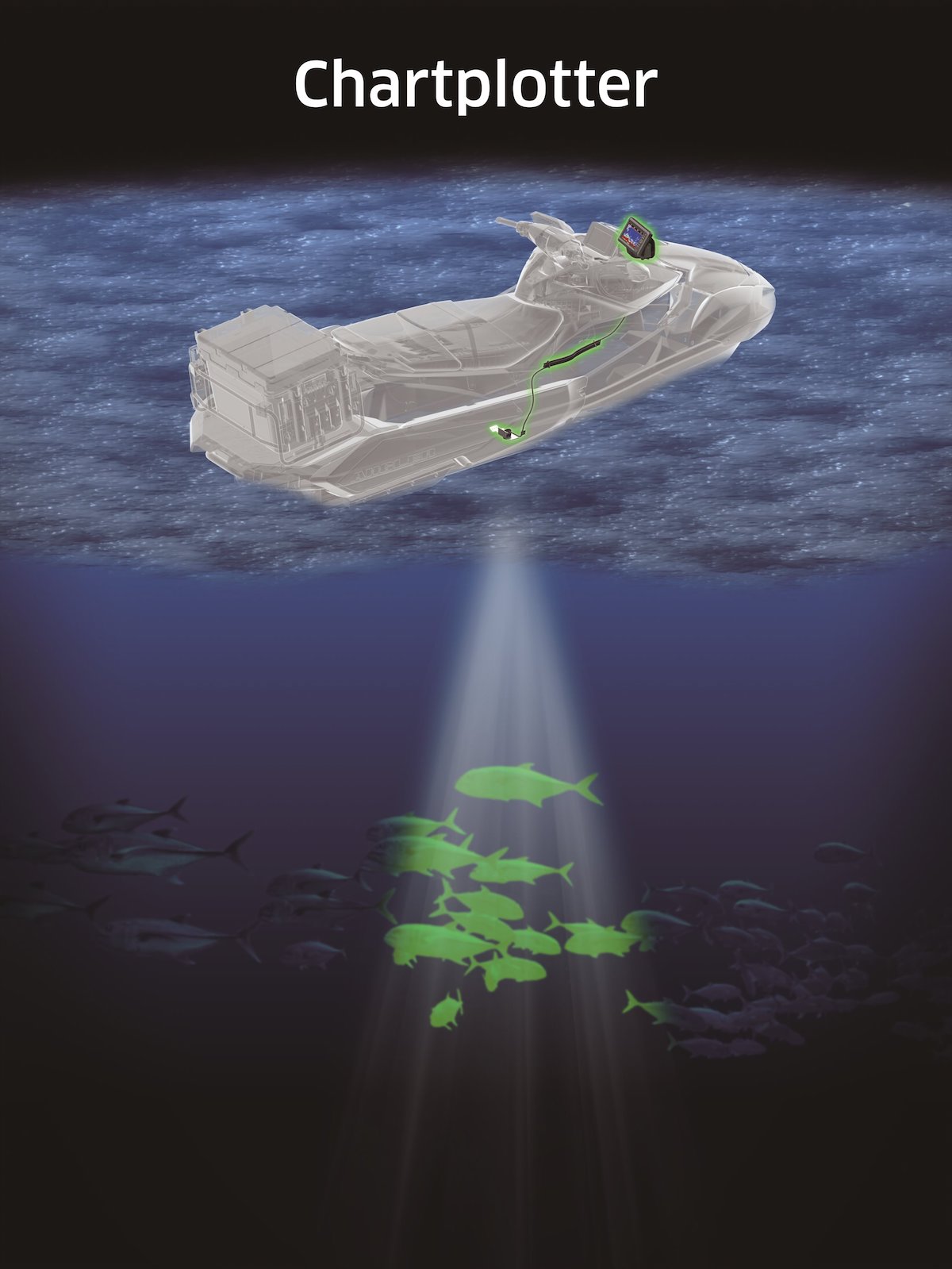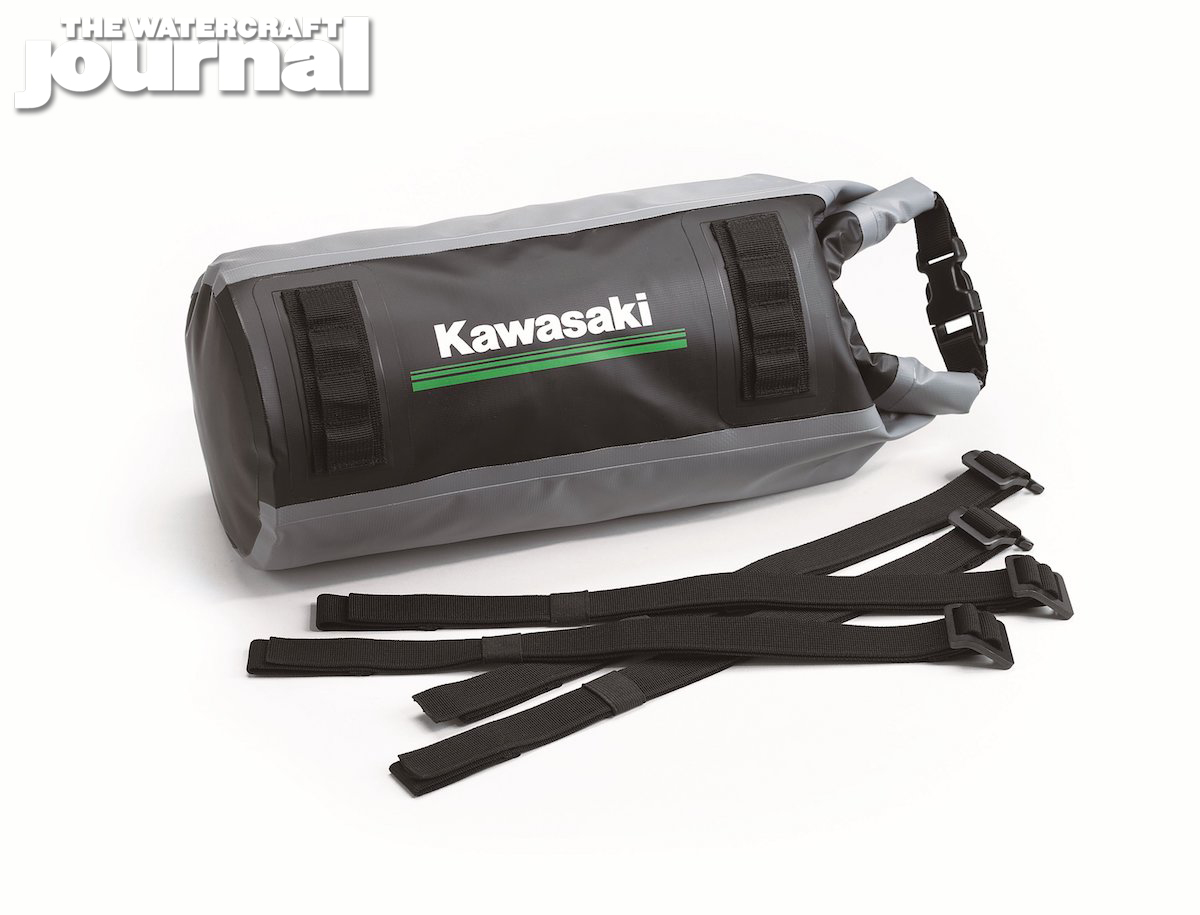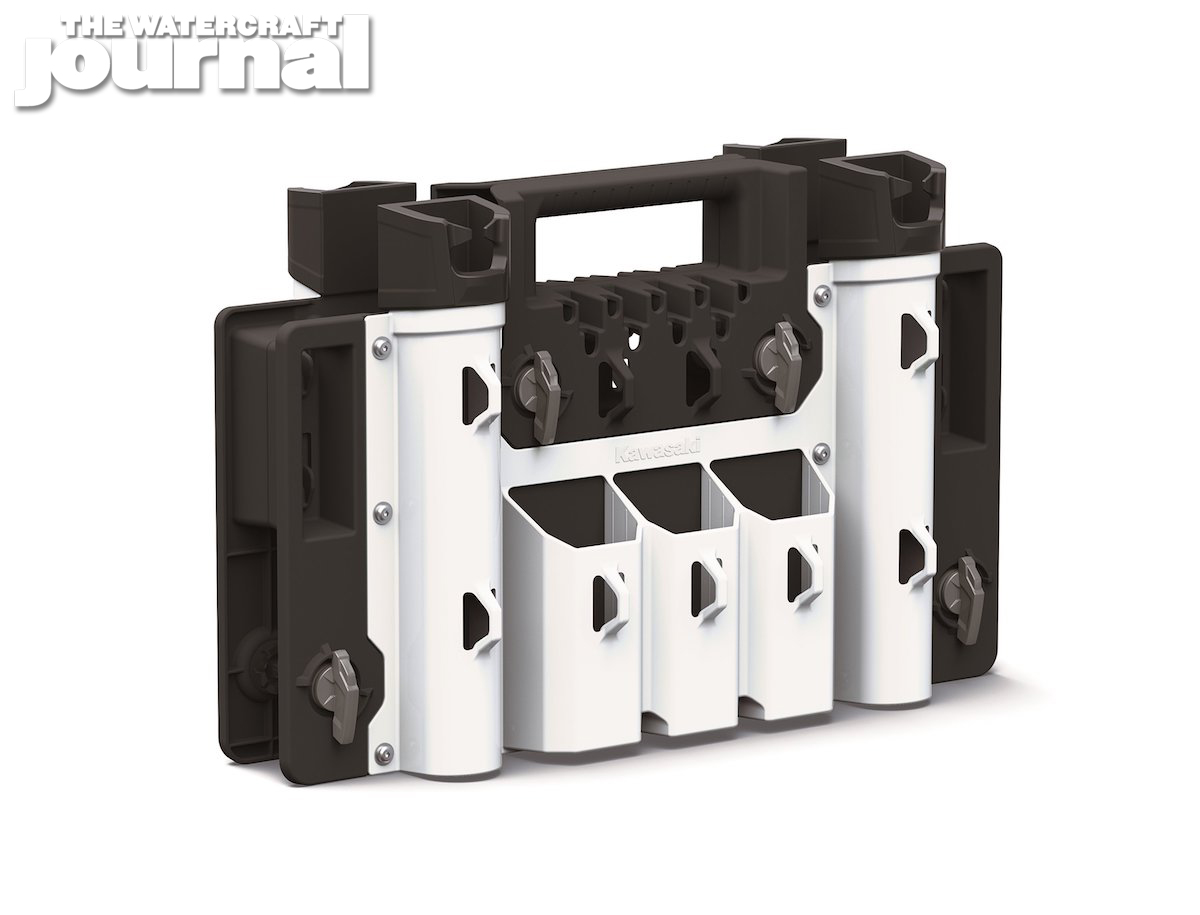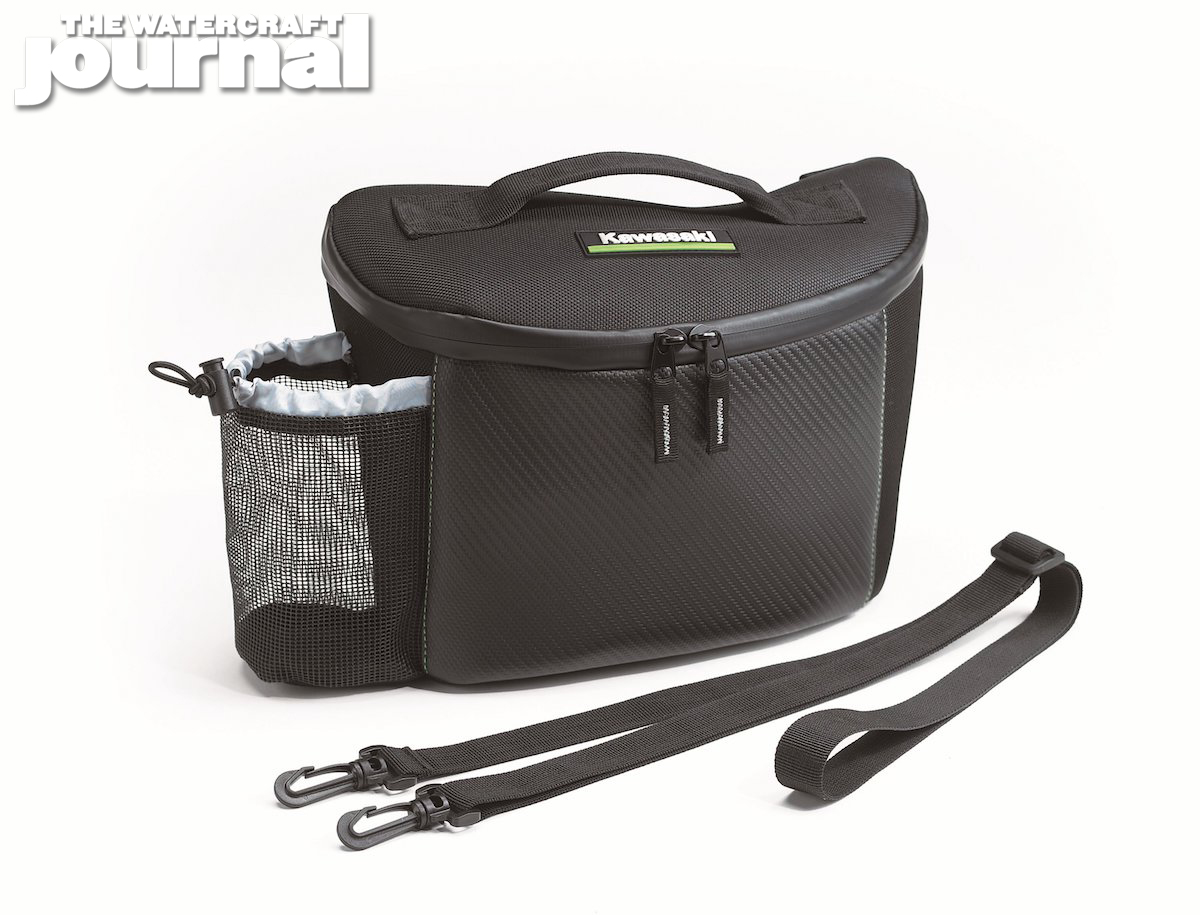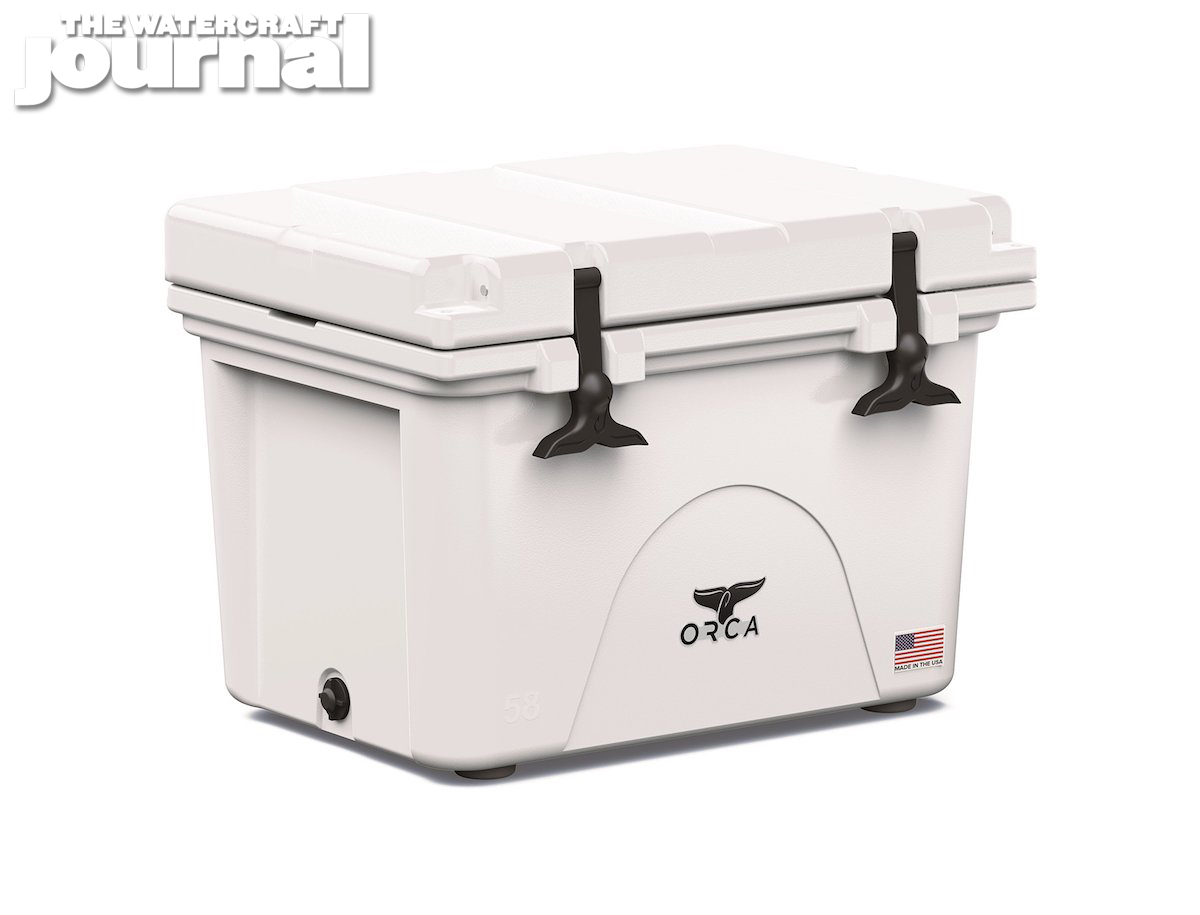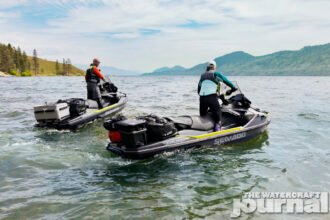
Never before have personal watercraft been better adapted to variety of tasks and a multitude of applications. From vital lifesaving equipment employed in shoreline and big surf rescues to innovative storage and cargo applications to maximize travel distance, today’s modern PWC are light years beyond the single-rider water scooters of decades past.
Although innovative fishermen have been adopting watercraft for fishing since the first runabouts, only recently have manufacturers embraced this demographic – and to tremendous acclaim. Sea-Doo’s 2019 Fish Pro and subsequent Scout, Sport and Trophy models have all been received warmly by displaced fishermen by escalating boat costs and disenfranchised kayak fishermen seeking greater accessibility.

Although declining to offer a dedicated fishing model, Yamaha delivered a pair of Jet Fish accessory packages that could be equipped on all full-sized FX WaveRunners with some considerable cost [a branded Jet Fish model was offered for Australian buyers in 2023 –Ed.]. Meanwhile, aftermarket brands had already began kitting units with cargo racks, rod holders, coolers and GPS units.
Seeing a viable audience that hadn’t otherwise been addressed directly, Kawasaki revealed its 2025 model year entry into the PWC fishing market – the Ultra 160LX-S Angler. Built from the naturally-aspirated Ultra 160LX-S JetSki, the Angler’s hull and deck is smartly coated in highly visible Crystal White with metallic Timberline Green accents. The standard LED headlamps increase the Angler’s profile.
Employing the Ultra platform provides the Angler a unique advantage over its competition: offshore and rough water superiority. The Ultra’s 22.5-degree deadrise and true Deep-V hull permits the JetSki to track smoothly through cresting 5-footers at speed without nose-plowing, erratic bow hunting or unhooking the pump. Above 15-20mph, the Ultra can sluice through chop unlike any ST3-based Sea-Doo.
Fitted with electric trim control, the rider can adjust the angle of the jet pump nozzle up to seven positions (STD and +/- three positions), permitting the rider to manipulate the attitude of the hull to best fit water conditions and riding style. The Ultra also includes Kawasaki Splash Deflectors (Quattro KSD) to deflect water splashing forward from underneath the hull.
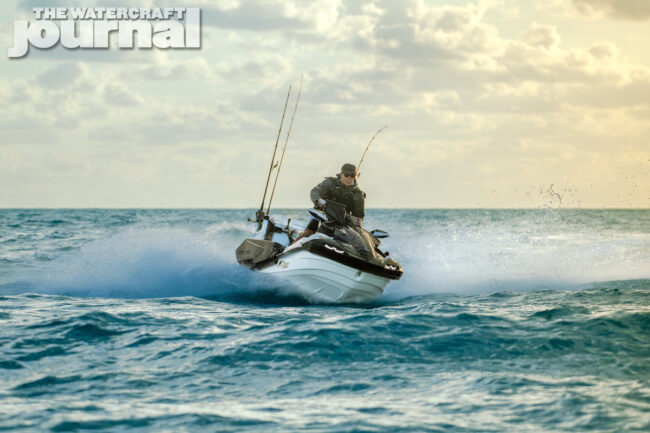
Unfortunately, the steep angle of the hull gives the standard Ultra a “tippy” sensation at lower idle speeds. While this characteristic is ideal for sportier, fast-paced cornering, it’s less desirable for low speed trolling. That’s why the Angler includes a pair of axillary stabilizers on each side, increasing flotation and stability when drifting. These outriggers assist in balancing the Ultra as the rider moves around the deck.
The roto-molded stabilizers are integrated into the JetSki’s bondline and blend into the Ultra Deck that adds over 6-inches in total length and include the built-in Multi-Mount cargo rail system and an extended folding swim step. The Angler outfits the Ultra Deck with a hydro-formed and TIG welded aluminum rack that’s hard-mounted to the deck and is equipped with versatile (and easily removable) side packs.
These two packs slide-and-lock to the sides of the Angler rack and include two rod holders (totaling four) and include a trio of pockets and mounting eyelits. Inside of the Angler rack comes a massive 14.5-gallon Orca hard cooler that’s held snug in place by four rubberized isolators. The rack’s upper rail is low enough to allow the cooler to be opened freely; but thus far, we see no solution to securing the cooler during heavy seas.
As the four aft-mounted rod holders will stow your gaff, net and rods while underway, a fore-mounted rod holder is smartly angled outward (attached to the left-hand gunwale) ideal of trolling at low speeds. And low speed trolling is made easy using the Angler’s one-touch 5mph mode. This optimized “No Wake Mode” is adjustable three times, increasing rpm and speed from 5 mph to 6.2 mph.
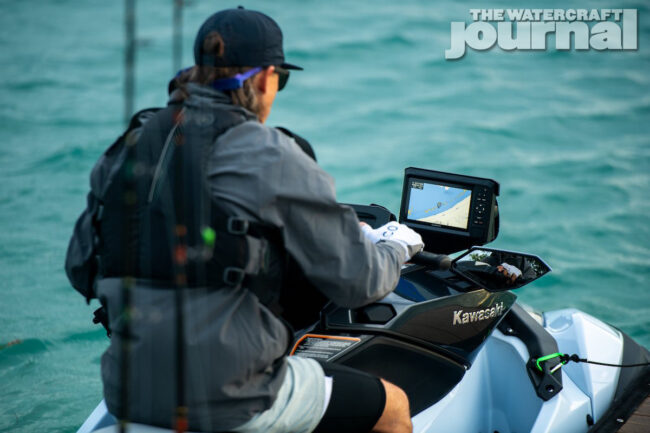
Any speed above that, the electronic cruise control will be ideal. With responsive toggles that give an audible “click”, the up/down buttons are within reach of your thumb even as you operate the throttle. Of course, the Angler includes Kawasaki Smart Reverse with Deceleration (KSRD) braking system, which integrates the thumb-activated brake into the throttle trigger keeping all controls within the right hand’s reach.
Smartly placed above and forward of the throttle is the new 7-inch Garmin Echomap UHD2 7cv chartplotter. Offering a highly visible, glare-free interface designed for seamless navigation and fish finding, the chartplotter offers all of the options that have made Garmin a “must have” for jet ski fishing including high definition GPS mapping, cross view fish finding pages, depth sounder and much more.
Carried over from the standard LX-S is the full-color TFT digital dashboard. Rife with multiple display modes, a jog-dial controller, Bluetooth connectivity, and a bunch of features like a GPS waypoint indicator, vehicle information, rear-view camera monitor and audio track display (although the Angler does not appear to include the rear-facing camera or Jetsounds speaker system as standard equipment).
Rider’s ergonomics are a high priority thanks to Kawasaki’s new Angler fishing bench seat, a firmer, flatter seat that allows for unrestricted movement and better resistance to staining and discoloring (fishing can be a messy job, after all). The Angler also enjoys 5-way adjustable tilt steering and optional adjustable seat tracks available through Kawasaki’s Parts & Accessories department.
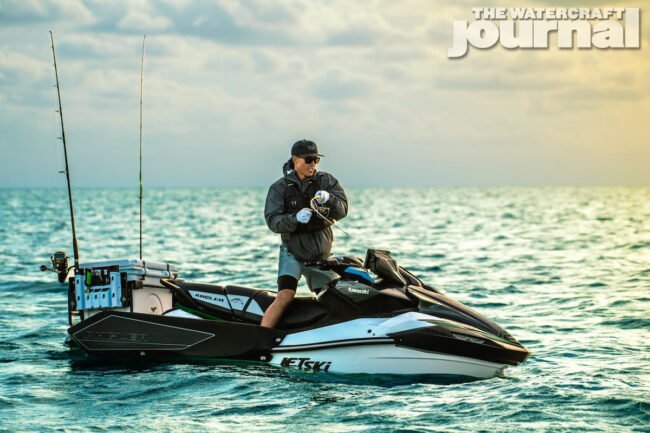
Beneath the seat is Kawasaki’s tried-and-true 1498cc DOHC, 16-valve, 4-cylinder engine. Being naturally-aspirated, Kawasaki upped the compression ratio to 10.6:1, producing an 87 octane-friendly 160-horsepower. Fed by a large diameter 60mm throttle body, electronic fuel injection system and an engine speed limiter and K-TRIC (TPS) sensor, the 1.5L engine features a liquid-cooled double-walled exhaust manifold, dual water boxes and dedicated cooling circuit for the cylinder block.
Storage on the Angler dwarfs that of the Sea-Doo Fish Pro with 44.5 total gallons of storage split between the full-sealed 32.8-gallons of bow stowage – ideal for items you don’t plan on accessing while underway – and the innovative 10.6-gallons of wraparound storage tucked behind dual gull wing-hinged fairings. Accessible from either the left or right hand side, the mid-storage compartment includes a 0.5-gallon watertight phone cubby with an optional USB port. A 0.7-gallon pocket in back is ideal for dock lines.
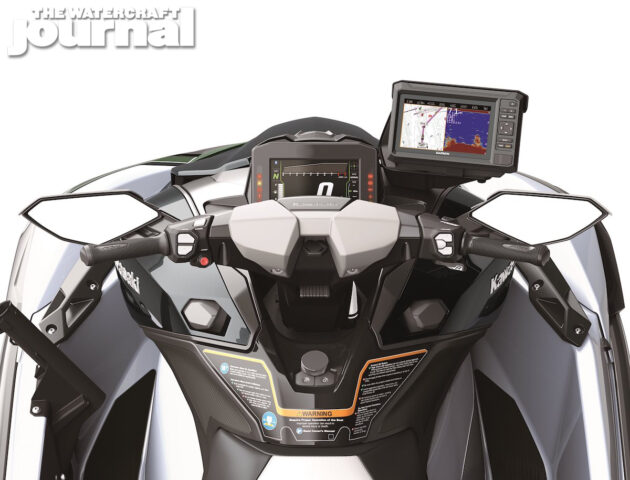
Of course, the same 21.1-gallon fuel cell found on all Ultra JetSkis carries over for the Angler as well, giving this JetSki the leading fuel capacity of all fishing-class watercraft. While several “firsts” place the Angler ahead of its competition, Kawasaki needs to prove the Angler as a viable fishing platform. Announced as a 2025 model, the Ultra 160LX-S Angler is due to his showrooms by Fall of 2024, therefore pricing has yet to be formally announced.
Corporate marketing images we’ve included below illustrate the Angler moored off of mangroves, fishing the channels; we at The Watercraft Journal contend that the Angler – more than any other – would be better suited to the Pacific kelp fields and the open sounds of North Carolina. While we’re certain it can handle each of these environs aptly, we can attest that the Ultra is a proven ocean-going vessel above others; now its time to demonstrate its mettle as a superior angling platform.








